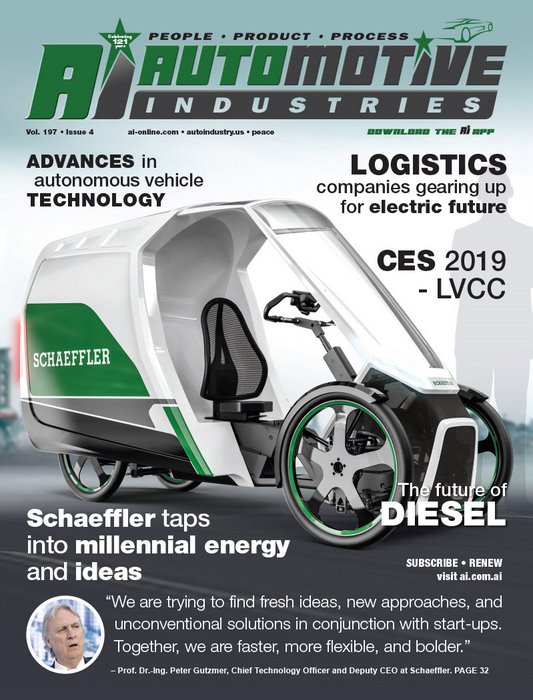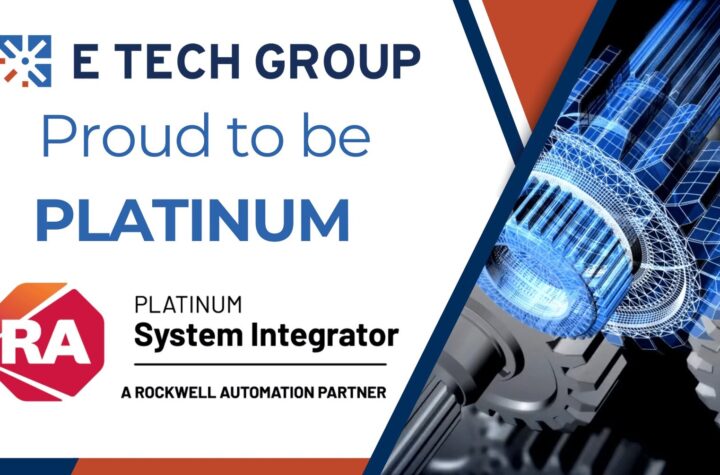
German automotive technologies company Schaeffler is harnessing the creativity and energy of start-ups through its Venture Forum initiative which invites start-ups to pitch business ideas to the company.
“We are trying to find fresh ideas, new approaches, and unconventional solutions in conjunction with start-ups. Together, we are faster, more flexible, and bolder,” says Prof. Dr.-Ing. Peter Gutzmer, Chief Technology Officer and Deputy CEO at Schaeffler.
Schaeffler hosted young companies at its Herzogenaurach headquarters for the pitching of ideas to its second Venture Forum. The companies were selected out 113 short-listed applicants from 24 countries around the world for their relevance to Schaeffler’s business. Presentations included smart factory/digitalization of production; mobility concepts; sensor solutions; data value creation and new material solutions.
The first Venture Forum has already spawned a new business. IT company Autinity Systems from Chemnitz is now part of the global Schaeffler Group. “The integration of Autinity has proved that this concept is effective. We want to find start-ups that we can integrate into Schaeffler,” says Gutzmer.
Schaeffler helps the young entrepreneurs to bring their ideas to market. “We review which start-up is attractive for Schaeffler regarding technology, business model, and entrepreneurship”, explains Prof. Dr.-Ing. Tim Hosenfeldt, Senior Vice President Technology Strategy & Innovation at Schaeffler AG. “If everything is a good fit, we continue to develop the business idea together.”
Innovation is key for Schaeffler which makes rolling bearings for automotive, aerospace and industrial uses. Its flagship brands, FAG, INA and LuK, are globally recognized. The company is also the largest shareholder in Continental. As part of its Agenda 4 plus One program Schaeffler is investing 60 million euros in its facility in Bühl, Germany. The new building will house research and development facilities and the headquarters for the company’s new Automotive OEM division.
“The new building that will be constructed here is a milestone in Schaeffler’s company history. Our choice of Bühl as the location for the Automotive division’s headquarters is a sign of how much we appreciate the outstanding work that has been done here over the last few decades,” said Georg F. W. Schaeffler, shareholder and Chairman of the Supervisory Board of Schaeffler at the sod-turning ceremony.
All the group’s automotive divisions and products are being rebranded. “With our new Automotive OEM headquarters in Bühl we are taking a further step towards becoming what we want to be: One Schaeffler Group, with one global strategy and one set of strong values. The best way to achieve this is with one common brand: The Schaeffler brand,” said Klaus Rosenfeld, CEO of Schaeffler at the ceremony. One of the companies which has already undergone the rebranding is LuK, where the Schaeffler group’s globally standardized logo has replaced the yellow LuK branding.
One of the opportunities for collaboration with Schaeffler is in the area of e-Mobility, which is becoming increasingly significant in the light of Schaeffler’s “Mobility for tomorrow” strategy. Schaeffler has opened global competence centers for electric mobility in Bühl, in Wooster (USA), and in Anting (China). They will be managed from the new headquarters and work as a network on new drive technologies, future mobility solutions for urban living spaces, and components designed to make automobiles more eco-friendly.

Automotive Industries (AI) asked Prof Gutzmer which start-up technologies Schaeffler focused on at this year’s Venture Forum.
Gutzmer: This year’s focus areas were smart factory / digitalization of production; mobility concepts; sensor solutions; data value creation and new material solutions. We invited 16 start-ups out of over 100 applicants. This was a tough task because of the exceptionally high quality of all applications. We are currently in detailed technical talks with a number of participants in all focus areas.
AI: What is the thinking behind the strategy?
Gutzmer: Our strategy is to connect two worlds in order to be faster and more successful together. The Schaeffler Group is looking for world-class start-ups that deliver innovative solutions in technology fields related to our core business. Our open innovation strategy to harness the knowledge and expertise of researchers and entrepreneurs outside of Schaeffler comprises two steps: First, we generate ideas and develop base technologies up to demonstrator status in our worldwide SHARE (Schaeffler Hub for Advanced Research) network. Then we engage with leading startups to industrialize those concepts.
An example of this approach is our recent joint venture with Paravan. The initial contact to Paravan was established by the SHARE at KIT, in connection with their research on automated driving. The second step was to start a joint development project to build a rolling chassis demonstrator. Now we have a 90% stake in the new business Schaeffler Paravan Technologie, which will enable us to become a major player in the fast-growing autonomous car market.
AI: Tell us a little about the previous year’s winners.
Gutzmer: In 2017 our focus was on field sensor technology; advanced data analytics and data value creation; and solutions for autonomous systems. Through this Forum we gained insights into new technologies, business concepts and development methods. The subsequent close interaction and collaboration between the start-ups and our own engineers has proven very valuable, not only on a technical level, but also with regards to employee motivation and network-building.
AI: What is Schaeffler’s Agenda 4 Plus One?
Gutzmer: Our “Agenda 4 plus One” is made up of the following five categories: Customer focus; Operational excellence; Financial flexibility; Leadership and talent management; and – as “plus One” – Securing Long-term competitiveness and value creation. These are 20 strategic initiatives which have been identified as global priorities for the group. Each initiative is sponsored by a Member of the Executive Board and has a project manager. The aim is to implement all initiatives by the end of 2020.
AI: What is the significance of Bühl as the center for the new automotive OEM manufacturing facility?
Gutzmer: This was a strategic decision to strengthen our e-mobility solutions. Bühl has been the headquarters for Schaeffler OEM Automotive since January 2018. There are around 5,500 employees at present. The new building will cover an area of 23,400 square meters, which will include office space for some 500 employees, a canteen, a conference and prototype construction and test rig facilities. The total investment comes to around 60 million euros, and 350 new jobs (primarily in the field of electric mobility) are expected to be created over the next few years.
AI: How has your company’s e-mobility business taken off?
Gutzmer: Our e-mobility business has been growing so strongly that we established a dedicated e-mobility business unit. This is to cater for a future where new vehicle sales will consist of 30% internal combustion, 40% hybrid electric vehicles and 30% battery electric vehicles. This means that 70% of the car pool will be electrified.
AI: What are some of the new technologies Schaeffler is planning to launch in the near future?
Gutzmer: There is continuous development of technology to optimize the entire powertrain. For transmission and e-mobility this will include a new generation of P2 hybrid electric motor; a dedicated hybrid transmission, and ongoing innovation for e-axles and e-clutches.
For the chassis you can expect to see new technology for rear wheel steering, refinement of the Schaeffler Intelligent Corner Module; and components for the rolling chassis. We are also working on steer by wire technology with the help of Space Drive by Schaeffler-Paravan Technologie.
Advances in internal combustion engine technology will include further development of the electromechanical cam phaser; friction reduction of components such as the bearings and crank shaft; optimization of the valvetrain variability and further developments in thermo management. There will be an ongoing focus on the development of variable compression ratio technology.















More Stories
Celanese Materials Shine in Multiple Category Winners at 2024 SPE Automotive Innovation Awards
New future-ready single-slot PXIe controller for high-performance T&M applications from Pickering Interfaces
US Army Awards ANELLO Photonics Contract Phase II SBIR Topic “xTech Search 7 SBIR Finalist Open Topic Competition”